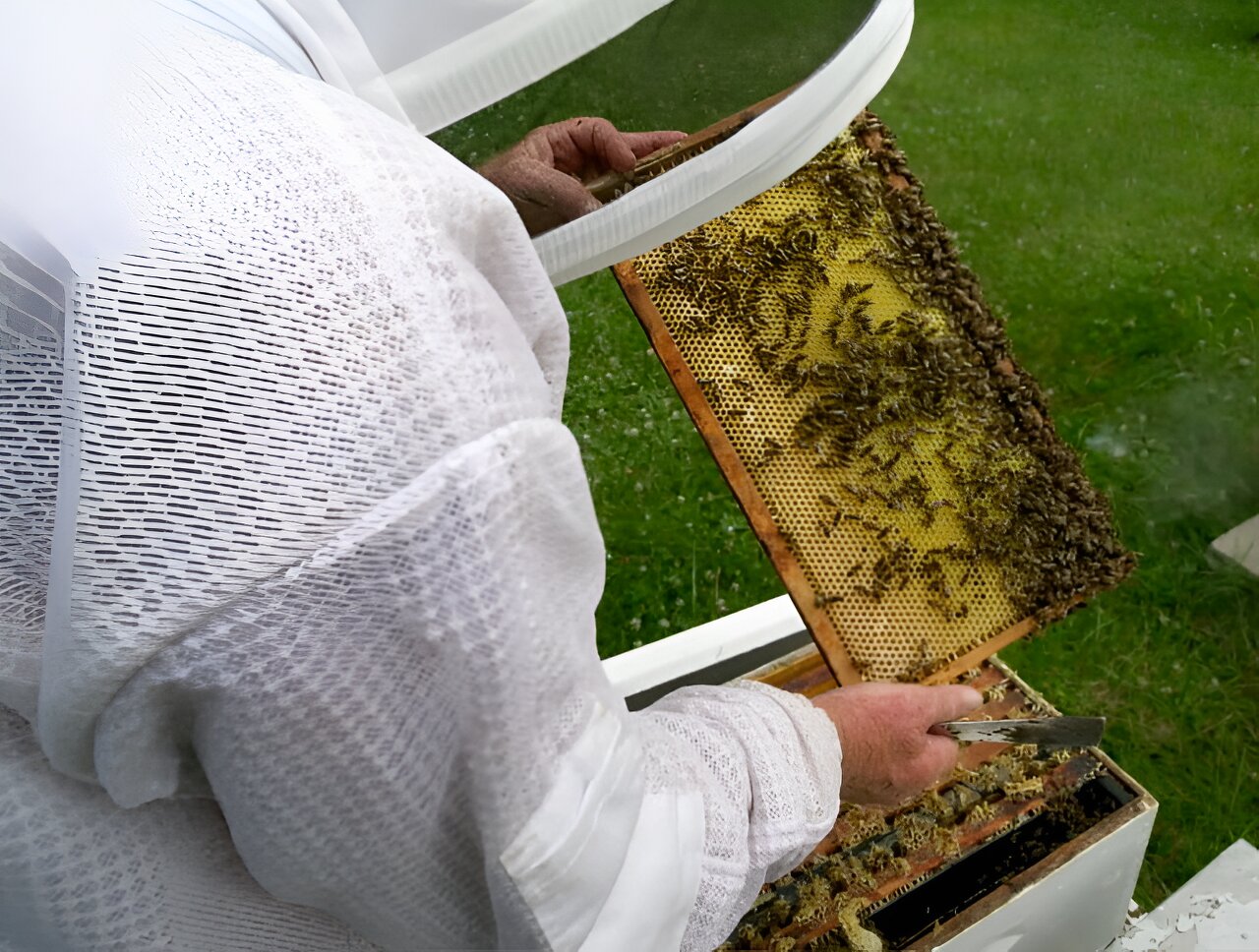Michigan
University of Michigan slithers toward history with acquisition of snake specimens

ANN ARBOR, Mich. — Greg Schneider scans rows upon rows of liquid-filled glass jars containing coiled snake specimens, just a portion of the University of Michigan Museum of Zoology’s reptile and amphibian collection believed to be the largest held by any research institution in the U.S. thanks to a recent donation.
The museum this fall acquired tens of thousands of reptile and amphibian specimens from Oregon State University, many of which are snakes. The development places the university in a unique position, according to Schneider, the research museum collections manager for the museum’s division of reptiles and amphibians.
“I’m fairly confident we’ll have the largest snake collection in the world,” he said. The extensive new additions also will allow scientists to conduct new snake and amphibian research, perhaps looking at trait evolution in mothers and their offspring.
Numerous studies have been conducted in recent years about declining amphibian and reptile populations, Schneider said, noting they “are very good biological indicators of the health of the environment and ecosystems,” especially the amphibians.
“Amphibians, unlike people, breathe at least partly through their skin, which is constantly exposed to everything in their environment,” he said, adding that “the worldwide occurrences of amphibian declines and deformities could be an early warning that some of our ecosystems, even seemingly pristine ones, are seriously out of balance.”
Boxes containing water snakes, garter snakes, woodland salamanders, dusky salamanders and other species arrived last month. They were euthanized and ultimately placed in a solution that is 75% ethanol. The donations represent the lifetime work of two retired Oregon State professors, Lynne Houck and Stevan Arnold, who received a doctorate from Michigan in 1972.
Schneider has yet to complete the painstaking process of cataloging the new material, but estimates it contains around 30,000 snakes. He said that would give Michigan a total of between 65,000 to 70,000 of the slithering vertebrates, surpassing collections at the Smithsonian in Washington, the American Museum of Natural History in New York and the University of Kansas. Some of the specimens housed at the museum prior to the Oregon State donation predate the Civil War.
The “largest snake collection” title would be nice, but Schneider said the true promise of a big collection is new research opportunities.
“The more stuff you have and the more associated materials that you have, the more things you can do,” Schneider said.
The newly acquired Oregon State collection also includes about 30,000 associated frozen tissue samples. Along with advances in molecular genetics and more sophisticated DNA analyses, the samples will allow research that could result in a better understanding of inheritance, evolutionary relationships and “has huge applications in medicine,” said Hernán López-Fernández, an associate professor in Michigan’s Department of Ecology and Evolutionary Biology.
A number of the newly acquired jars contain both snakes and litters of their newborns, which Michigan professor Dan Rabosky said “is very, very rare for museum collections and is incredibly powerful for research, because it lets researchers ask questions about genetics that would otherwise not be possible.”
Despite the daunting task of organizing the new collection, Schneider said he and his colleagues have noticed renewed excitement in team members who staff the university’s 153,375-square-foot (14,249-square-meter) Research Museums Center, where the specimens are housed.
“Since these specimens arrived, people are very, very, very enthusiastic and supportive,” Schneider said. “And excited about the kinds of research that are going to be done with these collections.”

Michigan
Michigan Democrats allege signature fraud by GOP Senate candidates, call for investigation
Washington — Michigan Democrats are alleging fraudulent signatures and calling for an investigation into the nominating petitions for Republican U.S. Senate candidates, according to a complaint filed Friday.
The complaint to the Michigan Board of State Canvassers follows “an initial and limited review” of the petitions and specifically names four candidates: Former U.S. Reps. Mike Rogers of Brighton, Justin Amash of Cascade Township and Peter Meijer of Grand Rapids Township as well as Grosse Pointe businessman Sandy Pensler. Meijer withdrew from the race in late April.
“The apparent fraud uncovered demands an immediate investigation of the Republican Senate candidates’ nominating petitions,” said Lavora Barnes, Michigan Democratic Party chair.
Complaints like the Democratic Party’s have become commonplace in recent years, in many instances leading to the removal of Democratic and Republican candidates from the ballot. If this latest complaint is substantiated, it could upend a crowded GOP primary Senate contest set for August.
The Board of State Canvassers is comprised of two Republicans and two Democrats.
But at least one Republican campaign accused the Democrats of playing politics.
“Democrats can’t beat Republicans at the ballot box, so it looks like they are trying to eliminate Republicans from the ballot. Sandy Pensler turned in over 26,000 signatures. He clearly qualifies for the ballot which is why no timely challenge was filed,” said Stu Sandler, a spokesperson for Pensler, a Grosse Pointe Park businessman seeking the GOP nomination.
The complaint, filed by the Elias Law Group, alleged “at least five” markers of fraudulent signatures by the GOP candidates:
- “Clear, full page circulator fraud with evidence that all lines of the petition were filled out by the same person.
- Voters’ names appearing across multiple candidates’ petitions in different handwriting with errors in addresses and spelling.
- Voters’ names appearing within a single candidate’s petition more than once, in different handwriting with errors in addresses and spelling.
- Evidence of a “round-robin” scheme, which refers to instances of signature gatherers for different campaigns taking turns signing candidates’ petitions from names on a voter list.
- Visible circulator handwriting and signature mismatches.”
The Democratic Party explained why Meijer was named in the complaint even though he dropped out of the race.
“Although Mr. Meijer has suspended his campaign, we believe the Board should know the full extent of potential fraud across these four candidates’ nominating petitions,” the complaint said.
“There is a well-documented history of significant fraudulent signatures on Republican nominating petitions in Michigan. In the 2022 election cycle, five gubernatorial candidates and three judicial candidates were not certified to appear on the ballot due to fraudulent signatures,” the Democratic Senatorial Campaign Committee said in a press release.
Look back: James Craig, Perry Johnson, 3 others ineligible for ballot, Bureau of Elections says (2022)
On the Democratic side, elections staff at the Wayne County Clerk’s Office determined Thursday that Democratic U.S. House candidate Adam Hollier of Detroit did not have enough valid voter signatures to qualify for the ballot in the 13th Congressional District. That came after first-term Democratic U.S. Rep. Shri Thanedar of Detroit, challenged the signatures Hollier’s campaign collected.
The county staff recommendation isn’t final, as an official determination hasn’t yet been made by Wayne County Clerk Cathy Garrett on the sufficiency of Hollier’s petition.
gschwab@detroitnews.com
@GrantSchwab
Michigan
Michigan’s April unemployment rate remains at 3.9%

Michigan’s jobless rate remained steady in April at 3.9% — the fourth consecutive month the number registered at 4% or less.
The monthly employment report was released Thursday by the Michigan Center for Data and Analytics.
Manufacturing and finance employment have dipped but that’s being made up in other sectors, said Labor Market Information Director Wayne Rourke.
“The big gains, they’re in industries like health care, they’re in industries like government,” he told Michigan Public Radio. “Construction’s doing very well, where the rest of them are just moving up and down a little every month and kind of staying flat.”
Overall, the report said non-farm employment in Michigan rose by about 37,000 jobs since the beginning of the year.
Rourke said Michigan’s jobs report is similar to what is happening in other states.
“Most of them are under 4 percent,” he said. “The U.S. actually matches Michigan this month. So, the story that we’re telling in Michigan is similar across most states – the jobless rates are really, really low and the payroll jobs have been increasing.”
Total employment in Michigan advanced by 1.1% since the beginning of the year. That is higher than the 0.3% national growth figure over the same period.
Non-commercial, fact based reporting is made possible by your financial support. Make your donation to WEMU today to keep your community NPR station thriving.
Like 89.1 WEMU on Facebook and follow us on Twitter
Contact WEMU News at 734.487.3363 or email us at studio@wemu.org
Michigan
All-American Albany transfer CB Aamir Hall commits to Michigan

Last year Michigan added UMass cornerback Josh Wallace via the transfer portal and Wallace would go on to be an integral part of Michigan’s secondary in 2023.
With both Wallace and Mike Sainristil now in the NFL and DJ Waller transferring, Michigan has added needed depth at the position in Albany transfer corner Aamir Hall.
Hall was an FCS All-American in 2023, tallying 57 tackles (37 solo) with five interceptions. Per PFF, Hall received an 85.7 overall PFF grade last season, a 73.0 passer rating allowed, and an 88.3 Coverage grade. Before playing for Albany Hall spent three years at Richmond where he totaled 106 tackles (61 solo), two interceptions, and 18 pass breakups.
Hall joins a cornerback room that includes Will Johnson, Ja’Den McBurrows, Myles Pollard, Jyaire Hill, and Keshaun Harris. It remains to be seen where Hall will rank on the depth chart. However, it’s fair to say that his experience along with sound tackling, savvy pass breakups, consistent interceptions, and solid coverage skills will have him carving out what could be a vital role on Michigan’s defense.
-

 Politics1 week ago
Politics1 week ago'You need to stop': Gov. Noem lashes out during heated interview over book anecdote about killing dog
-

 Politics1 week ago
Politics1 week agoRFK Jr said a worm ate part of his brain and died in his head
-

 World1 week ago
World1 week agoPentagon chief confirms US pause on weapons shipment to Israel
-

 World1 week ago
World1 week agoConvicted MEP's expense claims must be published: EU court
-

 Politics1 week ago
Politics1 week agoCalifornia Gov Gavin Newsom roasted over video promoting state's ‘record’ tourism: ‘Smoke and mirrors’
-

 News1 week ago
News1 week agoStudents and civil rights groups blast police response to campus protests
-

 Politics1 week ago
Politics1 week agoOhio AG defends letter warning 'woke' masked anti-Israel protesters they face prison time: 'We have a society'
-

 Politics1 week ago
Politics1 week agoBiden’s decision to pull Israel weapons shipment kept quiet until after Holocaust remembrance address: report

















